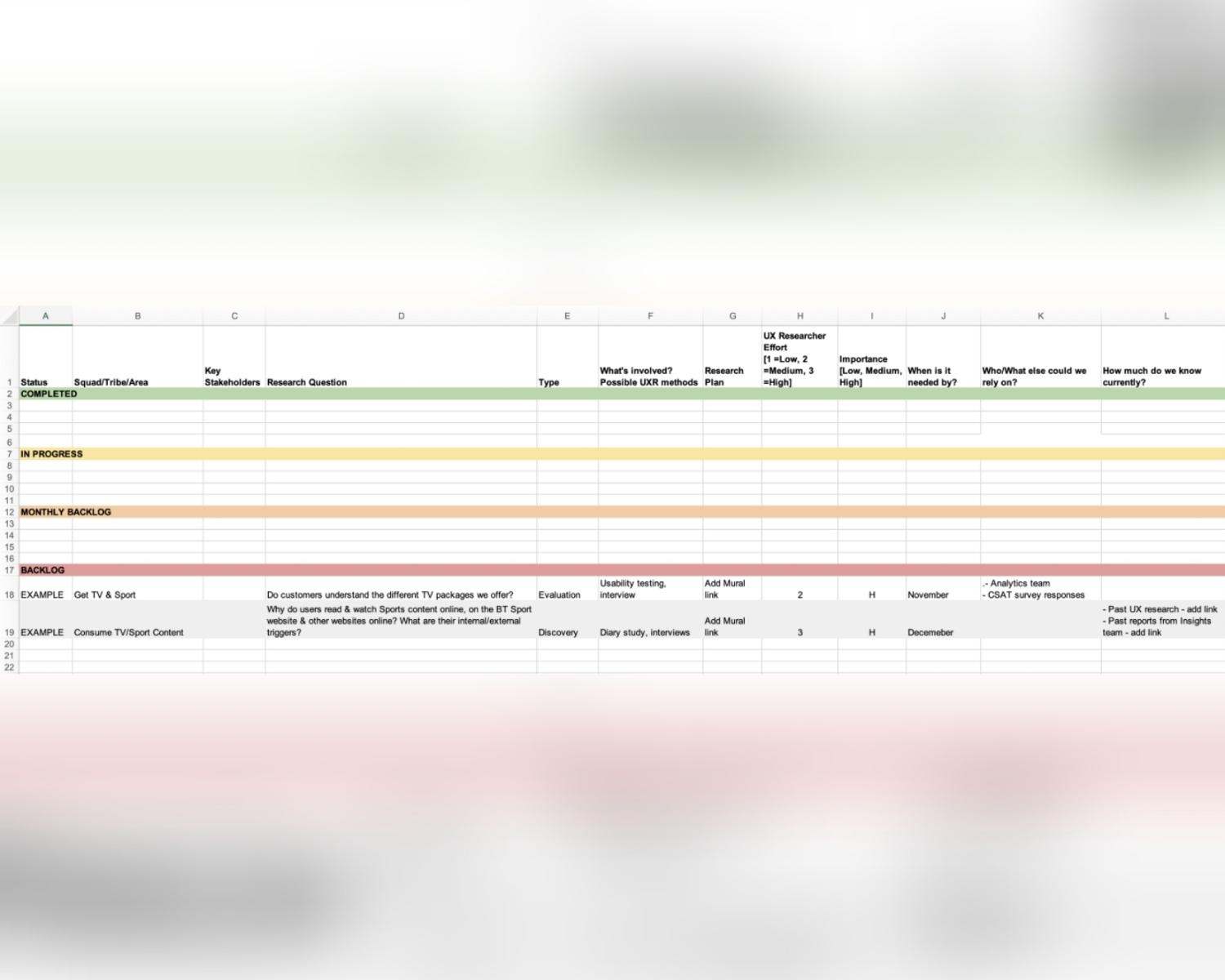Explore the World's Best Ideas
Join today and uncover 100+ curated journeys from 50+ topics. Unlock access to our mobile app with extensive features.
User Research X Agile Product Devlpmt - The Research Backlog 1/4
What’s the process of creating a backlog?
Step by step process:
1. Run a workshop with your team/s to first capture and prioritise research questions.
2. Using the template, move the identified research questions into the “Backlog” section. New research questions can also be added as they emerge.
3. Starting with the high priority questions, try to fill out as many of the columns as possible
4. Based on the importance and effort estimates, pull the research questions that you are confident you can deliver that month (you can change this to weekly/quarterly if needed) into the “Monthly Backlog”.
3
36 reads
User Research X Agile Product Devlpmt - The Research Backlog 2/4
5. Set up a regular meeting (Every two weeks, or monthly) with you key stakeholders (Product, Design etc.) to review the Monthly Backlog and confirm what the high priority projects are.
6. Once you pick up a research question, move it into the “In Progress” section
7. As you progress with the project, you can update the “Status” column accordingly to keep stakeholders informed e.g. Planning, Testing, Analysis, Reporting
8. Once the project has completed, move it into the “Completed” section. You may wish to add a link to your final report in the “Status” column.
2
15 reads
User Research X Agile Product Devlpmt - The Research Backlog 3/4
Backlog content
Squad/Tribe/Area — which squad/tribe/area would this work fall under?
Key stakeholders — who are your key stakeholders for this project?
Research question — what’s the question you’re trying to answer?
Type — is this evaluative or discovery research? Keeping track of this over time, will help you to ensure there’s a good balance.
What’s involved? — what UX research methods could you use to answer the question?
UX Researcher Effort — how much effort will it be for you to complete this research? 1 = Low Effort (e.g. days), 2 = Medium Effort (e.g. weeks), 3 = High Effort (e.g. months).
2
10 reads
User Research X Agile Product Devlpmt - The Research Backlog 4/4
Importance — how important is it to answer this research question? Think about the business and customer impact — you may want to rely on the POs to guide you on this. L= Low importance, M = Medium importance, H = High importance.
When is it needed by? — Is there a deadline for this work?
Who/what else could we rely on? — It may make more sense for another team to pick up this research question e.g. Analytics, Customer Insights.
How much do we know currently? — What previous research has been done? Are there insights from other teams/sources which we could use to help answer this question.
2
16 reads
IDEAS CURATED BY
Experience designer and design teacher interested in well-being, accessibility and great design practices. Specialising in service design, product design and user research.
CURATOR'S NOTE
Managing Research and feeding hypothesis and areas to test into a regular research cadence are critical for mature user experience teams and products
“
Natasha Bee's ideas are part of this journey:
Learn more about product with this collection
Essential product management skills
How to work effectively with cross-functional teams
How to identify and prioritize customer needs
Related collections
Similar ideas
12 ideas
7 ideas
Decision Time: How Decision Rules Help You Make Better Product Decisions
romanpichler.medium.com
6 ideas
Get started with agile project management
atlassian.com
Read & Learn
20x Faster
without
deepstash
with
deepstash
with
deepstash
Personalized microlearning
—
100+ Learning Journeys
—
Access to 200,000+ ideas
—
Access to the mobile app
—
Unlimited idea saving
—
—
Unlimited history
—
—
Unlimited listening to ideas
—
—
Downloading & offline access
—
—
Supercharge your mind with one idea per day
Enter your email and spend 1 minute every day to learn something new.
I agree to receive email updates


